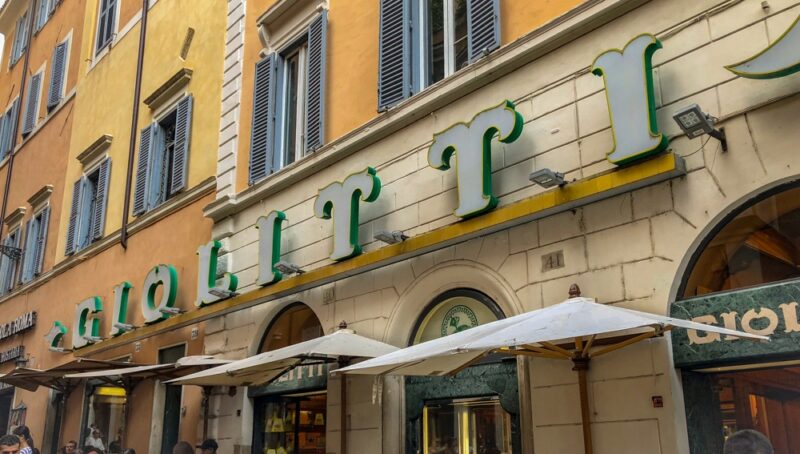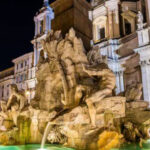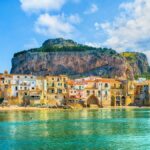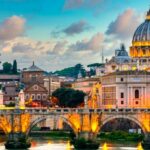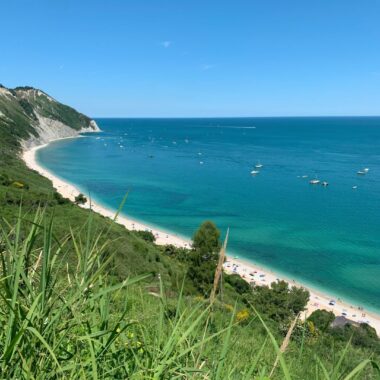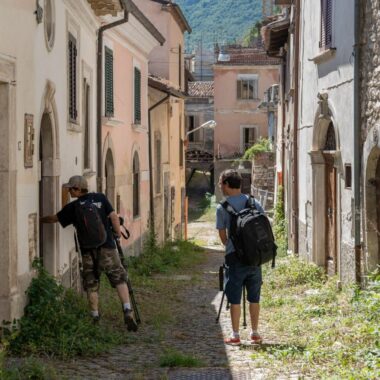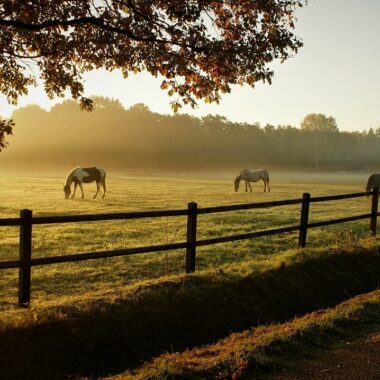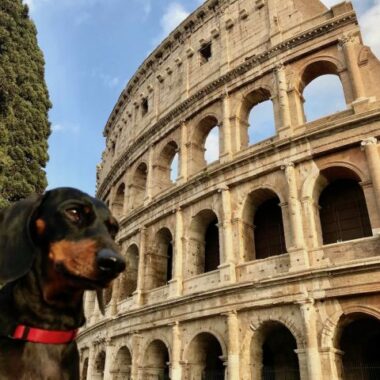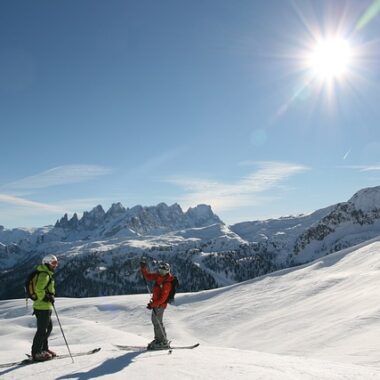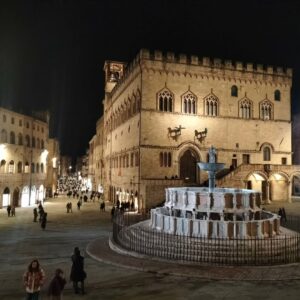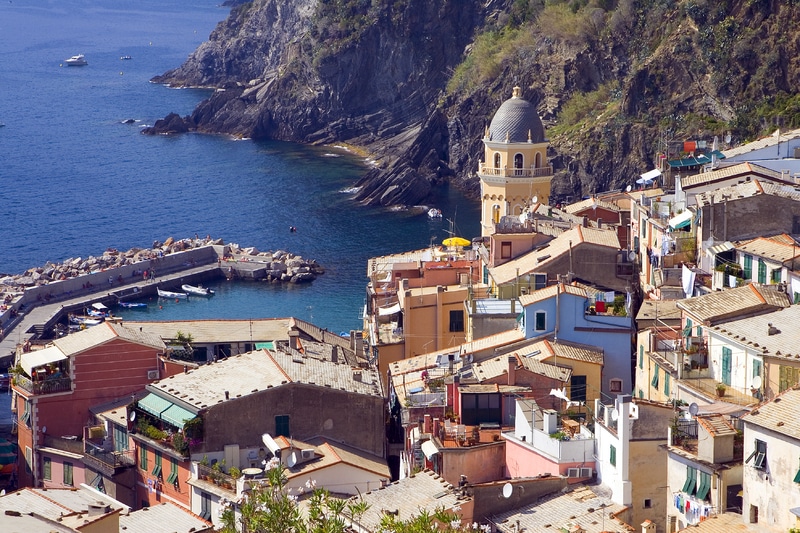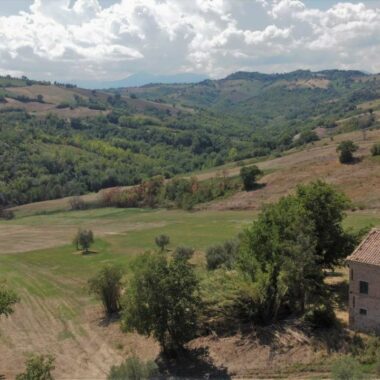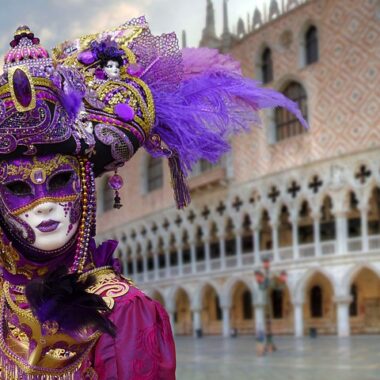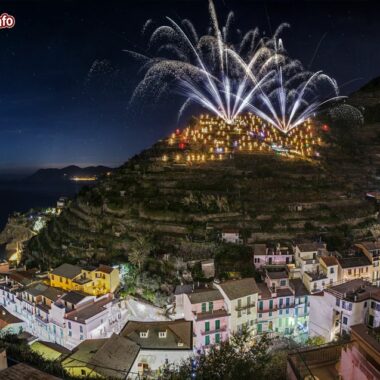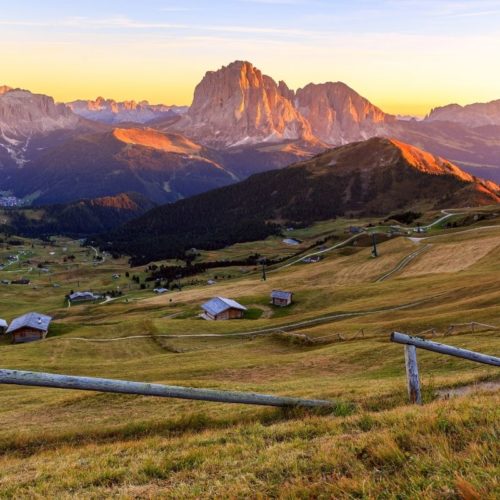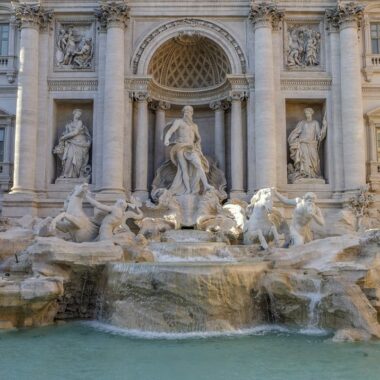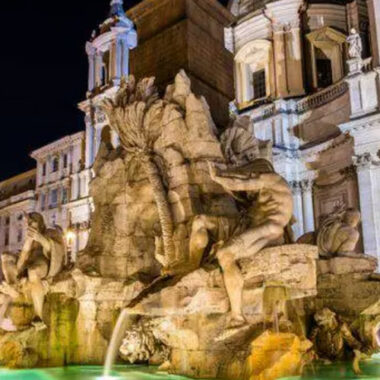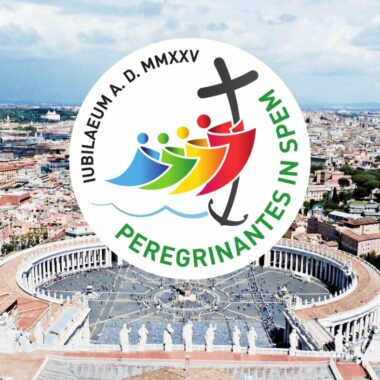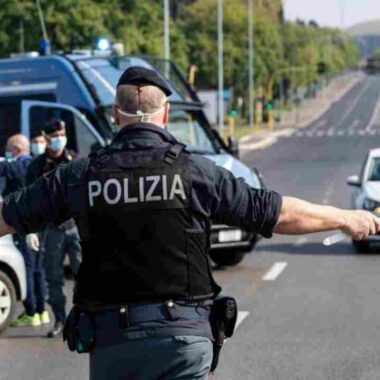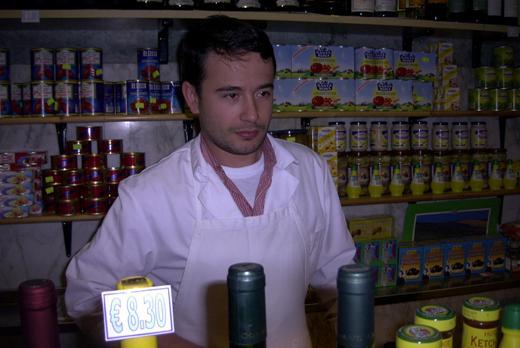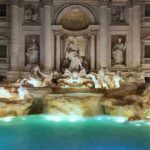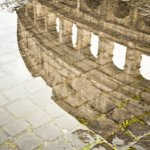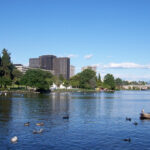As the years are passing, more and more secrets of Rome become a very popular point for visitors. The hidden gems of Rome are not so hidden anymore. Rome, the Eternal city is like a museum that you have to spend a few days to explore. This museum has many special pieces that must be seen. With that told, we have collected a list of 35 things to do in Rome, Italy. Explore te Italian capical city with this Rome bucket list!
35 Things to do in Rome, Italy
#1 Trevi Fountain
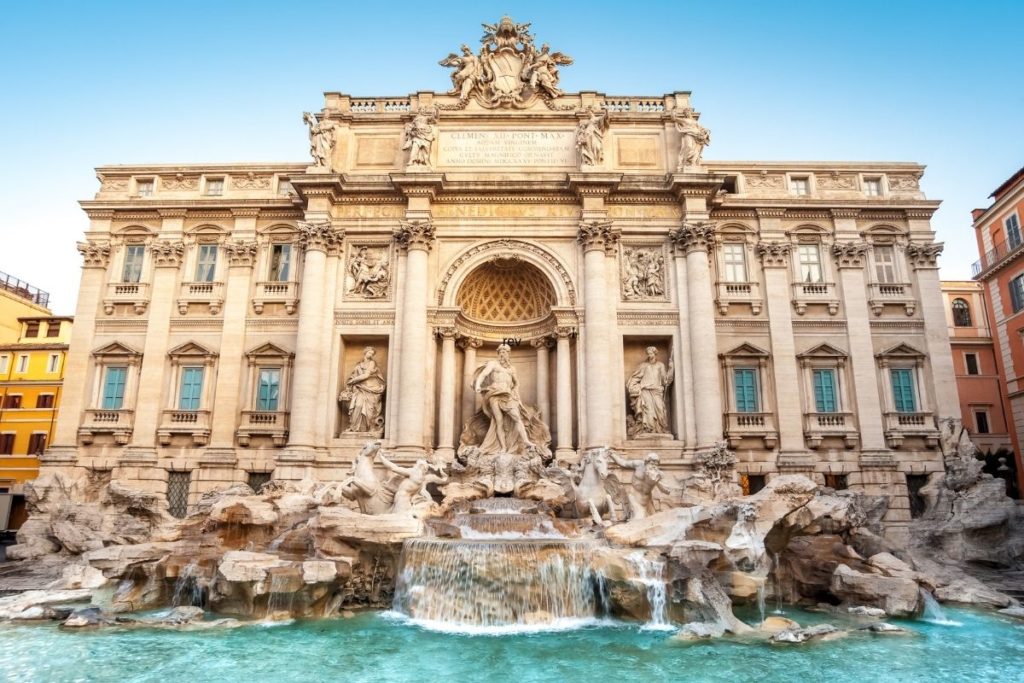
If there is any fountain that can be named as the most beautiful, that would be Trevi Fountain. Located in the Trevi district in Rome, Trevi Fountain stands 86 feet high 161 ft wide, making it the largest baroque fountain in the city. Needless to say, it is also the most famous and photographed fountain in the world, and one of the top places to visit in Rome.
In the center of the fountain is Oceanus, a Greek Sea God standing over two hippocamps (half horse-half fish), and is accompanied by the sculptures of Abundance on his right and Wisdom to the left. There is a tradition of throwing coins into the fountain, which started in ancient times but has been followed even today.
The legend holds that a coin thrown into the fountain will ensure a safe return back home. Today, these coins are collected every day and given to Italian charities. Roughly 3000 Euros worth of coins gets dropped every single day. The fountain is a free attraction and is usually crowded, so it is advisable to visit the place early in the morning to enjoy the fountain before it gets busy. Visiting the Trevi fountain is one of the most important things to do in Rome, Italy!
#2 Altare della Patria – Vittorio Emmanuele II monument
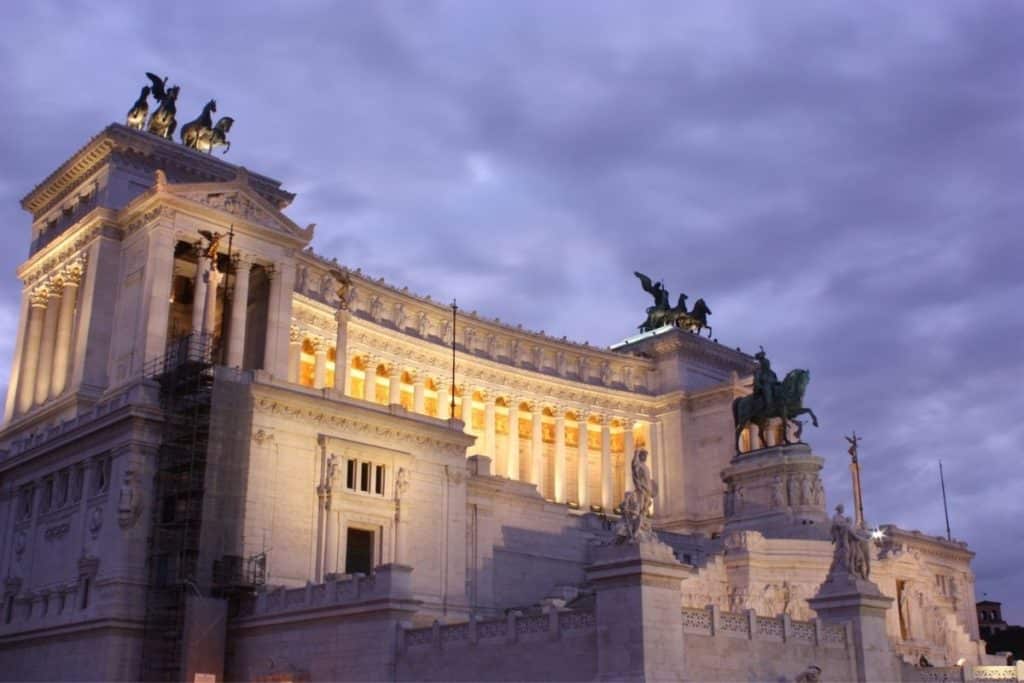
When in Rome, you cannot miss the Victor Emmanuel II National Monument, also known as Altar of the Fatherland or Mole del Vittoriano. This 19th-century building in central Rome was designed in neoclassic styles, like a modern forum dedicated to the first king of unified Italy.
This Italian landmark built on three levels and crowned by a colonnade is the equivalent of the Arc de Triomphe in Paris. It hosts a museum dedicated to the Italian unification and the shrine of the Italian soldier.
Even if you are more interested in ancient Rome, the Altar of the Fatherland is worth a short stop during your city explorations. From the top, there is a fantastic view of Via dei Fori Imperiali and the ancient forums!
The Victor Emmanuel II National Monument is located between Piazza Venezia and Capitoline Hill. It is not far from the Imperial forums, Galleria Colonna or Piazza Navona.
#3 Vatican Museums
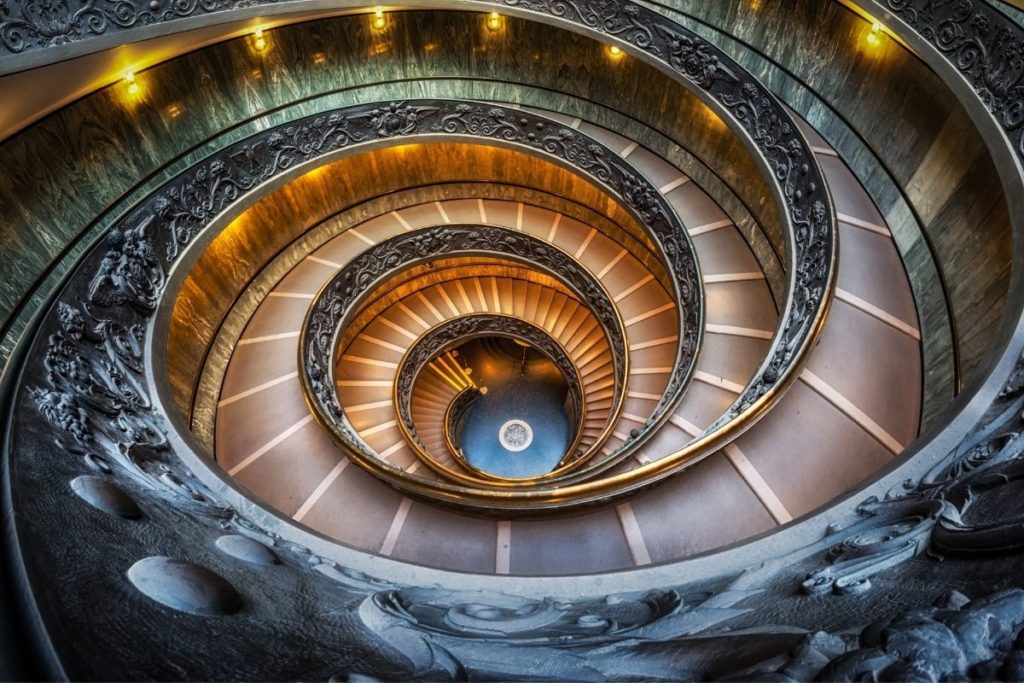
No trip to Rome would be complete without a visit to the Vatican Museums and the Sistine Chapel. The Museums house the impressive papal collections of art and archeological artifacts gathered over many centuries.
Notable works in the Vatican Museums’ collections include the ancient Laocoön sculpture (in the Octagonal Court) and the beautiful Raphael’s Rooms. These four rooms were painted by Raphael and commissioned by Pope Julius II who used the rooms for his residence. It was Julius II who also commissioned Michelangelo’s astonishing work in the Sistine Chapel, another “must see” at the Vatican Museums.
Plan to spend two hours at the Vatican Museums and Sistine Chapel to get a good overview of the impressive collections and the beautiful architecture and decoration. The Museums are typically most crowded in the middle of the day. Avoid long lines by purchasing your tickets online ahead of time or consider taking an early morning guided tour to miss the big crowds.
#4 Pantheon
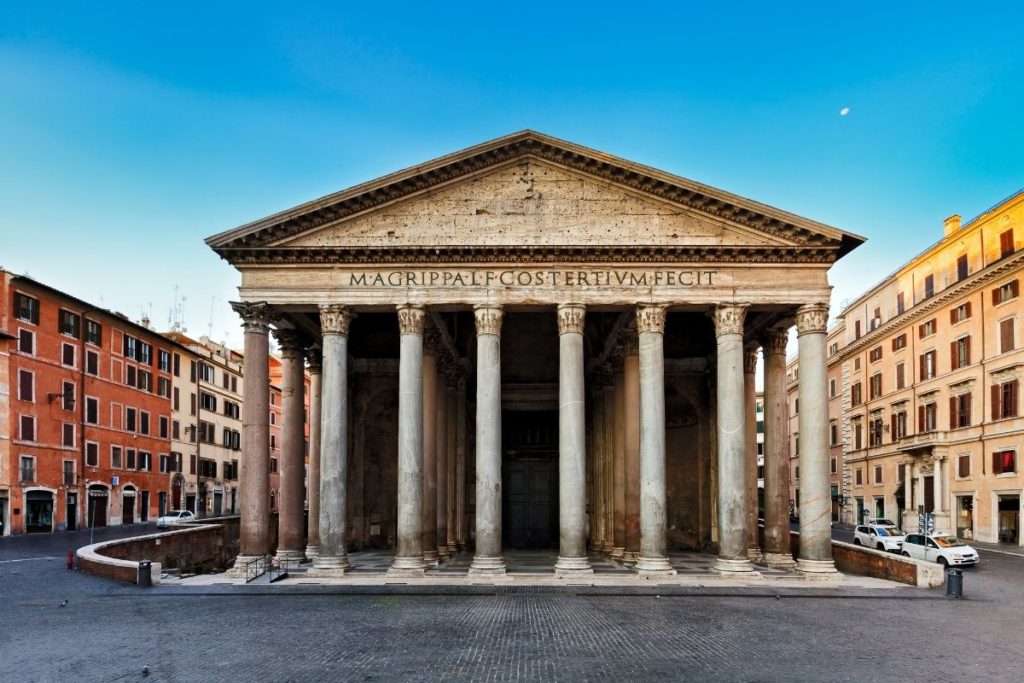
Another highlight of the most important things to do in Rome, Italy. Pantheon is the oldest church in Rome, and it’s one of the most spectacular monuments in the Eternal City. The Pantheon is on Piazza della Rotonda, in heart of Rome. It’s close to the Trevi Fountain and the Piazza Navona.
Every time I see it, a weird feeling is catching me, and I can’t ever skip going inside, even if just for a few minutes. With its enormous sizes, it’s always reminding every visitor of the power and majesty of the Roman Empire.
The grandiose temple was built in the 2nd century, and it’s Rome’s best-preserved ancient building. The open oculus on the roof of the building makes it even more unique, this being, by the way, the main light source of the building. One of the many facts about Rome is that it is like a museum with buildings of all ages.
The entrance for visitors is free, and it’s open during the day, with limited opening hours on Sunday. As the Pantheon is a church, you’ll need to pay attention to dress accordingly. At least have something to use as a cover-up.
#5 Piazza Navona
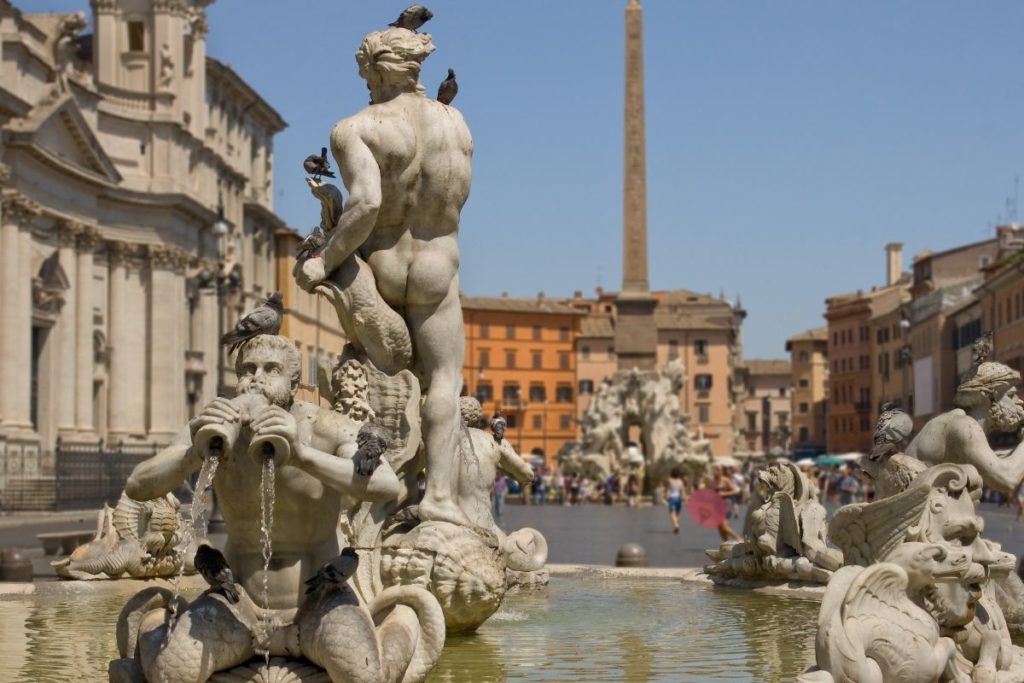
Picture a square, which comes to life with street artists, floating bubbles, instrumental music playing, fluxed with movement, the flow is as poetic and the experience as immersive as one stands witness to the sights and sounds of this buzzing square – Piazza Navona. A classic example of baroque architecture, in the center, stands the famous Bernini masterpiece Fontana dei Quattro Fiumi or Fountain of the Four Rivers, the calming embrace of the free-flowing water fountain juxtaposed with the humdrum of the people passing by.
The four statues represent the most important rivers of the continents where Christianity had spread; the Nile, Danube, the Ganges, and Rio de la Plata. Atop the fountain, the Obelisk of Domitian (which had originally been part of the Circus of Maxentius) withstands the testimony of time with its remarkable design. We alternated between strolling and sitting at the cobblestoned square during the late evening hours, as it left us enchanted with its grandeur and liveliness. The 900 footlong piazza is also known for the 2 other fountains at its southern and northern ends, and the ancient church Sant’Agnese in Agone, facing the square. It’s rather intriguing that a site, which once was known to host athletic competitions, retains its charm as a leading attraction in Rome.
Flanked by traditional Italian restaurants and terraces, there are options plenty for die-hard Italian cuisine fans. If I had another chance, I would just sit here for hours, with a coffee tucked in hand, absorbing the conundrum of people moving past, just as time slipping like sand.
#6 Visit the Colosseum

Contributed by Dymphe from Dymabroad
One of the best things to do in Rome is visiting the Colosseum. This building is one of the most famous landmarks in the world and it is one of the New7Wonders of the World! Going here is also a must when spending 3 days in Rome.
The Colosseum is an amphitheatre that was built almost 2000 years ago in the Roman Empire. It the largest amphitheatre from ancient times. About 65,000 could sit in the Colosseum to look at the entertainment. The amphitheatre was used for various reasons.
There were gladiator fights, animal hunts, mock sea battles, and more. It played a large role in the history of the Roman Empire, which makes it a great place to visit! You can see the building from the inside, which is very interesting! You can see here where the audience would sit and where the entertainment took place. Also, there are tours during which you can learn more about the history of the place. As I’m sure you already know, the Colosseum is one of the greatest highlights of the things to do in Rome, Italy and it must be on your Rome bucket list!
#7 Visit the Underground Passages of the Colosseum
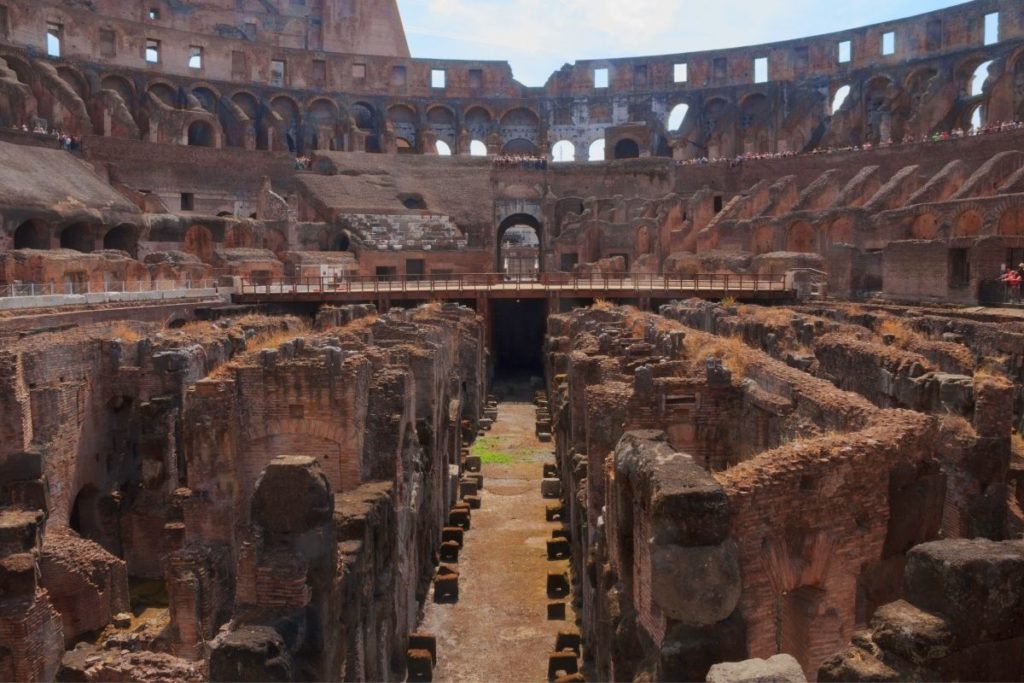
Want to make your visit to the Colosseum truly unique? Visit what is known as the Hypogeum and see the inner workings of one of the most recognizable landmarks in the world! Comprising of a massive series of tunnels and passages, this is where the gladiators and animals would be stationed before they took the stage.
The Romans certainly knew how to keep things exciting, and when visiting the Hypogeum takes you back in time to the massive amount of energy and thought that went into the theatrics of the Gladiator spectacles. One of the highlights is visiting the working trapdoors and aqueducts that were used to flood the Colosseum floor!
Securing a visit can be a bit tricky and isn’t available at present to visit on your own. You can book a tour through the Colosseum or through a reputable tour guide. This ancient backstage pass is something that is unique, historical, and gets you away from the crowds and into the once beating heart of ancient Imperial Rome.
#8 Roman Forum
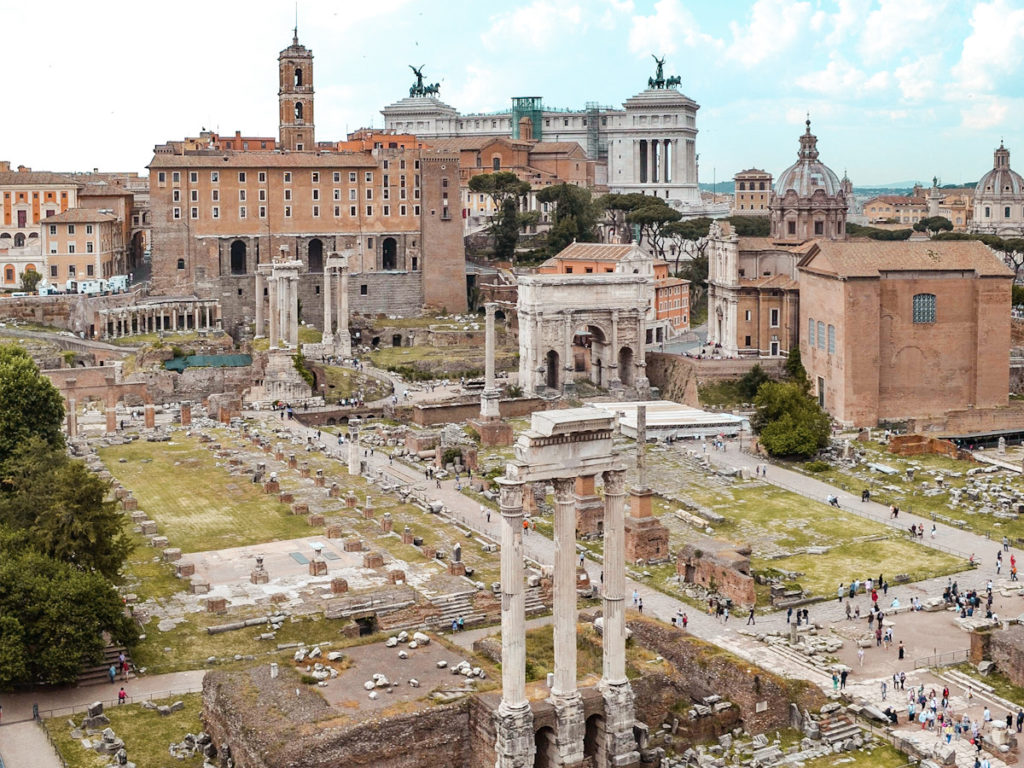
Contributed by Steph from A Nomad’s Passport
The ruins of Roman Forum, or ‘Forum Romanum’ in Latin, lie in the heart of Rome and next to the Colosseum. It was the center of the political and public life of the Roman Empire and the place where public meetings, elections, trials, gladiator fights and an open-air market took place. Walking through the ruins allows visitors to step in the footsteps of the Roman Emperors that build and extended the area.
Some of the most impressive constructs of the Roman Forum include the Via Sacra, which was the main road of ancient Rome, and the Curia which was the Senate House. Additional impressive structures include the Temple of Saturn and the Arch of Titus, which was built in 81 A.D. to honor Titus’ victory in Jerusalem.
The Roman Forum is part of one of the most visited monument complexes in the world, so it isn’t one of Italy’s hidden gems and can get rather crowded. The best time to visit the Roman Forum is early morning or late afternoon.
Another place to visit is Palatine Hill, which is adjacent to the Roman Forum and included in the ticket. It is the place where Romulus supposedly founded the city and is the location of the ruins of the ancient imperial palaces.
#9 Castel Sant Angelo
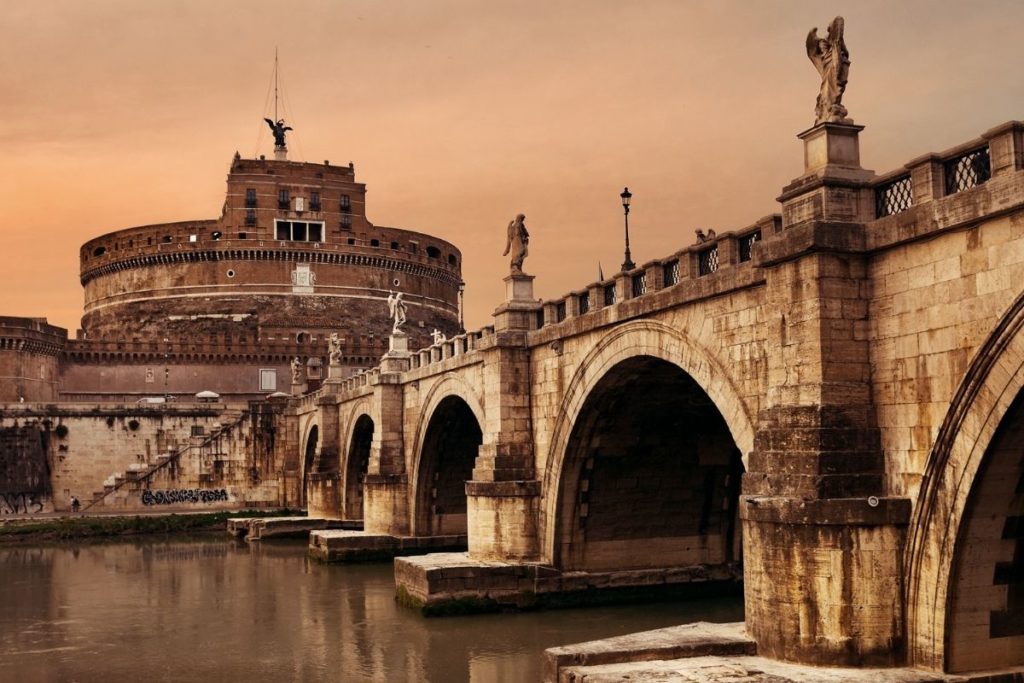
The castle was built by the emperor Hadrian in the 2nd century. It was meant to serve as the mausoleum for him and his family. At the beginning of the Middle Ages, it became a fortress of Rome for military use.
Later, Castel Sant’ Angelo went under the control of the Vatican, and it’s been connected to the papal state shortly after. This served as an escape passage in case of danger. The castle was used also as a prison.
Castel Sant Angelo was considered the tallest building in Rome for a very long time. Nowadays it’s functioning as a museum. Best to approach via the street called Via del Governo Vecchio, followed by Via Banco del Santo Spirito. These will bring you right in front of the Castle and the bridge leading to it, which is also called Sant’ Angelo. If you’re approaching from this direction, you’ll also gain a spectacular first view of the castle.
25 more things to do in Rome, Italy
#10 Campo de Fiori
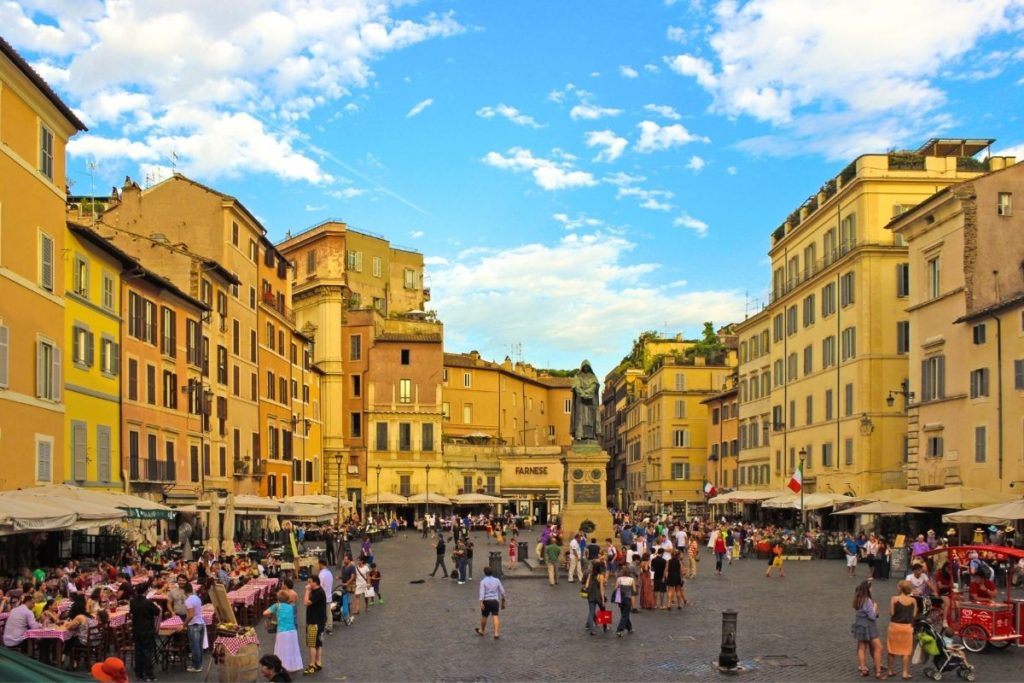
To experience the heart and soul of local culture, you need to head to Campo de Fiori, a medieval square located in the heart of Rome’s historic center. This market is one of the bucket list places in Rome. This area is bustling with life day and night, thanks in part to the market that takes place here daily.
During the day, this is the perfect place to try local Italian produce and food, smell the incredible flowers on display, and wander around and get lost amidst the vendors. In the evenings, locals gather in the square to visit the many options for food and drink at the bars and restaurants in the area.
#11 Trastevere
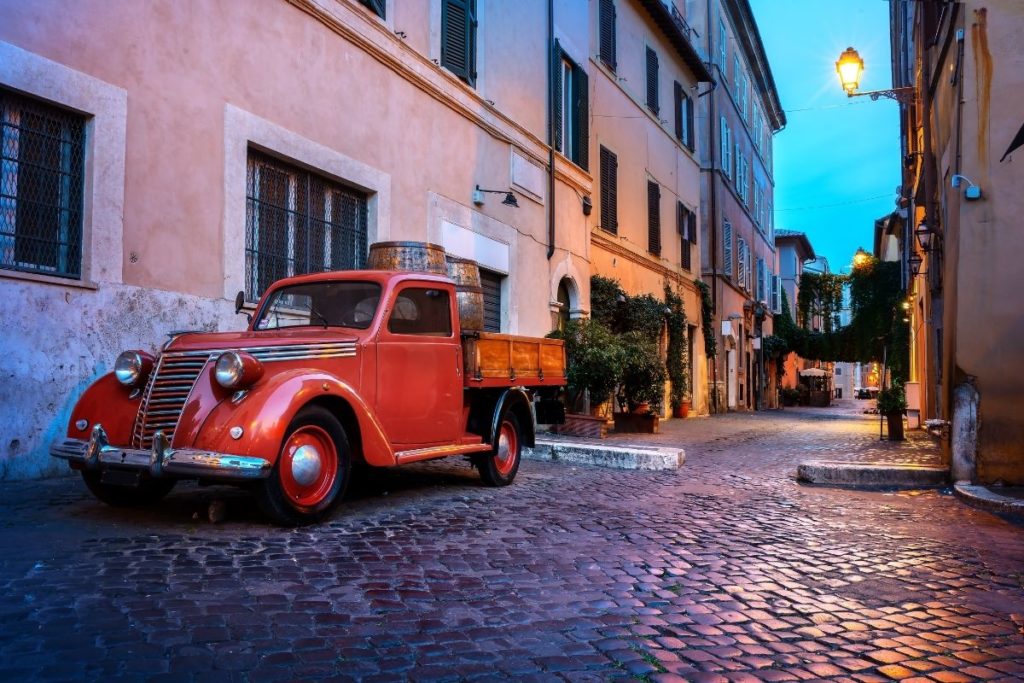
Trastevere is a bohemian quarter in Rome where cobblestone streets blend with tranquille magic at the west bank of the river Tiber. Its colourful buildings, typical roman tavernas and boutique shops make it a pleasant stroll.
Buildings covered in ivy speak of italian history, narrow streets will take you back to the time of the working class that once lived here. Trastevere bursts with life at night time transforming into the popular place of crowds.
Main two squares of Trastevere are Piazza di Santa Maria and Piazza Trilussa. One of the oldest churches of Rome is placed at the Piazza di Santa Maria, dating to the 3. century.
Few lovely villas and palaces are the elegant corners to discover like Villa Farnesina, Palazzo Corsini or Villa Doria Pamphili in the adjacent area of Monteverde. The Botanical Garden behind Palace Corsini is a hidden gem between palms and pines full of medicinal plants and herb garden. You can even find a Japanese garden with the waterfall and tropical greenhouse.
Sunday’s flea market makes Trastevere pretty alive, but the San Cosimato market will offer you the best local market experience daily. Tiber island with a hospital, church, and lovely restaurant is a perfect relaxing spot. Trastevere is one of the highlights of the things to do in Rome, Italy!
#12 Largo di Torre Argentina Cat Sanctuary
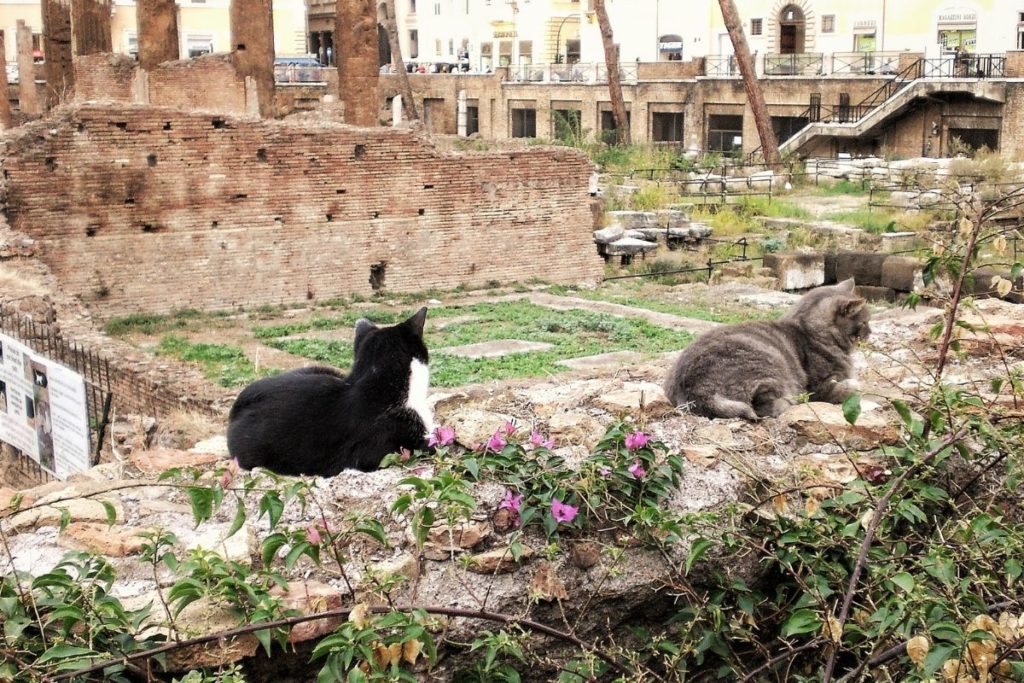
Contribution by Claudia Tavani from Strictly Rome
Located between Piazza Venezia, home of the Altar of the Fatherland, and the historical center of Rome, where you’ll be able to spot world-famous places such as Piazza Navona, the Pantheon, Trevi Fountain, or the Spanish Steps, Largo di Torre Argentina is a beautiful, smaller archeological site and home to Rome’s most famous cat sanctuary.
Cats are protected in the city of Rome and often taken care of by what are commonly locally referred to as “gattare” – cat ladies. In Rome, cats have made themselves at home also in archeological sites, and this is the case with the sanctuary of Largo di Torre Argentina. Research has established that this is where the Curia of Pompey (part of the larger Pompey Theater) is located: the very place where Caesar was stabbed to death on 15 March, 44 BCE – a date known in history as the Ides of March.
Should you decide to pay a visit to the cats of Rome, make sure to leave a small donation to help sustain the sanctuary. You can simply buy one of the many objects on sale – calendars, fridge magnets and other trinkets that make a nice souvenir to bring back home with you.
#13 Galleria Sciarra
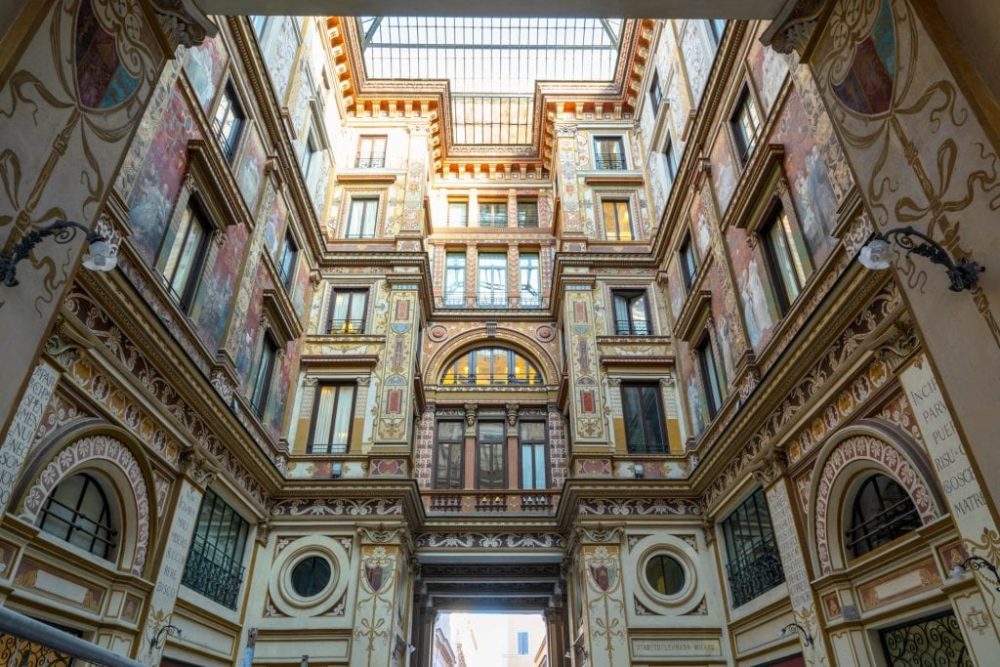
Contributed by Kate from Our Escape Clause
Tucked into an unassuming office building a mere 2-minute walk from the bustling Trevi Fountain, the beautiful Galleria Sciarra is a fantastic hidden gem that deserves a spot on any Rome itinerary.
Built between 1885 and 1888, the Galleria Sciarra is an intricately decorated courtyard that features an Art Nouveau iron and glass ceiling, and, most famously, beautiful frescoes painted by Giuseppe Cellini in 1887 with the theme “Glorification of Women”.
The frescoes are intended to symbolize what Cellini believed to be feminine virtues: faithfulness, strength, patience, mercifulness, and justice, among others. To visit the Galleria Sciarra, head to Via Marco Minghetti, 10, 00187 Roma RM, and enter the courtyard of the unassuming yellow building–the exterior gives little hint to the beauty within.
As the building that houses the Galleria Sciarra is used as an office building today, this beautiful spot in Rome is only open during business hours. The Galleria Sciarra is free to visit.
#14 Caravaggio paintings inside the Church of San Luigi dei Francesi
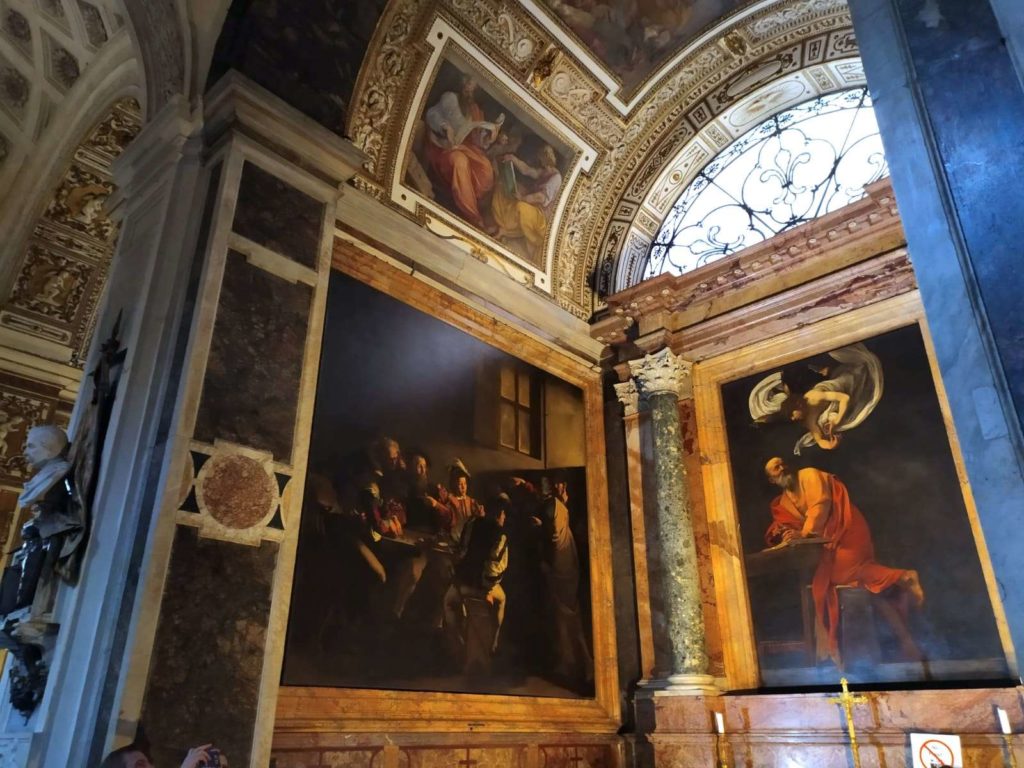
By Annalisa of Travel Connect Experience
A few steps from one of the largest and most scenic squares in Rome, Piazza Navona, is located the national church of the French in Rome, or San Luigi dei Francesi, restored in the 16th century.
Although the decorations of the structure are in French style and inside are depicted and celebrated the saints and historical figures of the French tradition, one of the side chapels contains three masterpieces of Italian painting.
The Contarelli Chapel takes its name from Matthieu Cointerel, a French cardinal who had the task of directing the decoration of the chapel. He chose to have it represent episodes from the life of St. Matthew, one of the 4 evangelists, who had the same name of the cardinal and carried out a similar task in his life, namely a tax collector, before knowing Christ. The artist to whom the artwork was assigned was Michelangelo Merisi known as Caravaggio, who produced three magnificent canvases that express the talent in composition and use of light for which he became famous in the history of art.
The Vocation of St. Matthew, St. Matthew and the Angel, and the Martyrdom of St. Matthew, tell three crucial moments in the life of the saint: when he met Jesus Christ, when he wrote the Gospel and when he lost his life at the hand of an assassin sent by the King of Ethiopia.
Access to the church is free and to admire the three paintings you will only need to insert a one euro coin into the switch that provides light to the Contarelli Chapel, unless some other visitor has already done so.
#15 Take a food tour in Rome
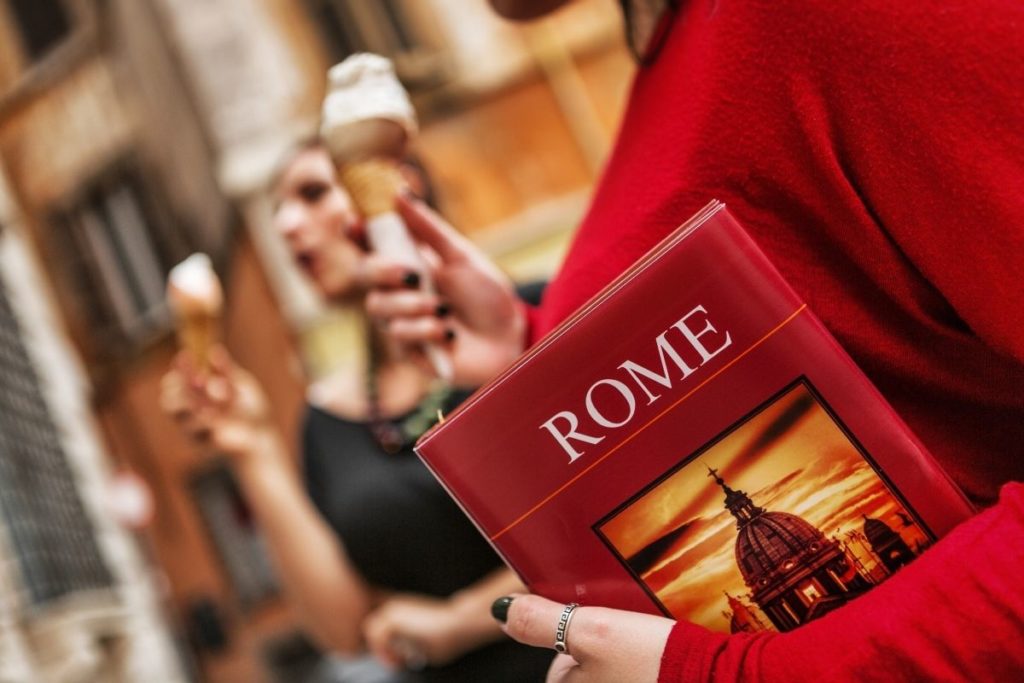
Let’s speak about some interactive things to do in Rome. Rome is a city full of ancient treasures, delicious food, and charming people. When you visit it’s best to take the time to explore all that this beautiful place has to offer. The Eternal City. Rome is one of the most visited cities in the world, and with good reason. Its history, culture, art, and architecture are all rich and fascinating. But what about food?
What better way to get an insider’s perspective on this amazing city than by sitting down with a local for a meal or two at their favorite restaurant? Or by tasting local delicacies straight out the pan, or learning to create them yourself. A great way to do that is with a wonderful Rome food tour.
Taking on the city’s food tours will teach you how to experience Rome like a local. Discover what it is like to taste the flavors of Italy on an exciting tour with a private guide. Whether it be traditional or modern Roman cuisine, explore all that this powerful city has to offer while learning about its culture and history at the same time.
#16 Bocca della Verita
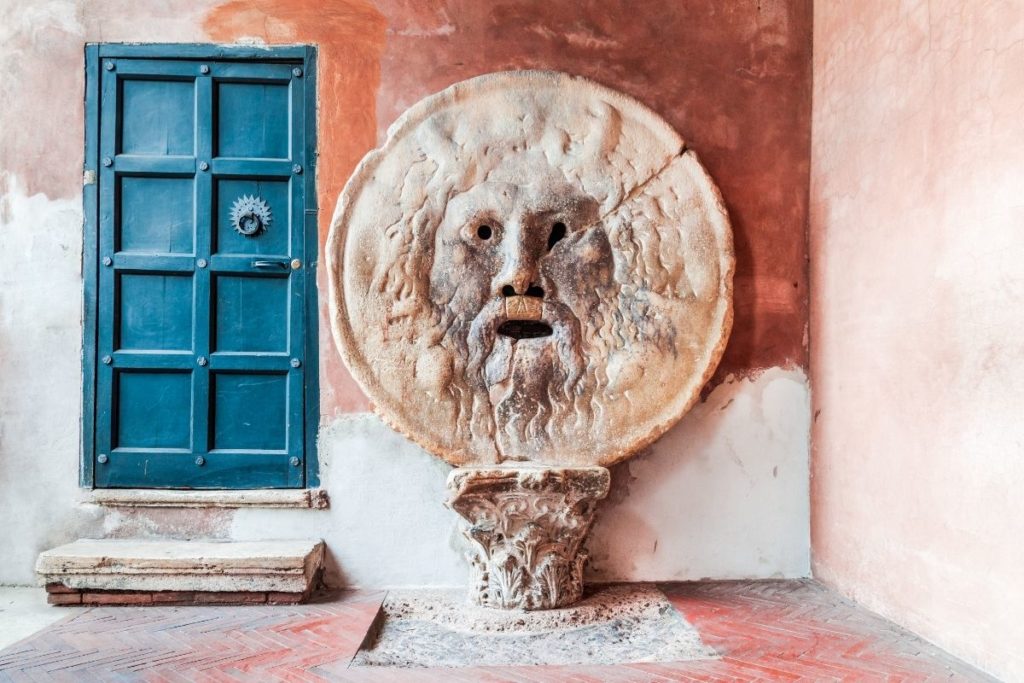
This is a fun one! Bocca Della Verita translates to the Mouth of Truth. Some of our readers will know this one from its feature in the film Roman Holiday starring Audrey Hepburn. A popular belief is that this enormous piece of marble, depicting a fac, is actually an ancient roman drain cover. It’s one of the hidden gems of Rome, and it must be on the list of things to do in Rome!
The marble mask weighs a whopping 1300kg and underwent carbon dating that confirms it is from the ancient Roman era. In theory, water can pass through the big holes which represent the eyes, mouth, and nostrils. Over time an urban legend has developed which says that those who put their hand in the mouth and don’t speak the truth will have their hand removed! I recommend testing the legend and getting a cool photo while you’re there.
#17 Look through the Keyhole of the Knights of Malta
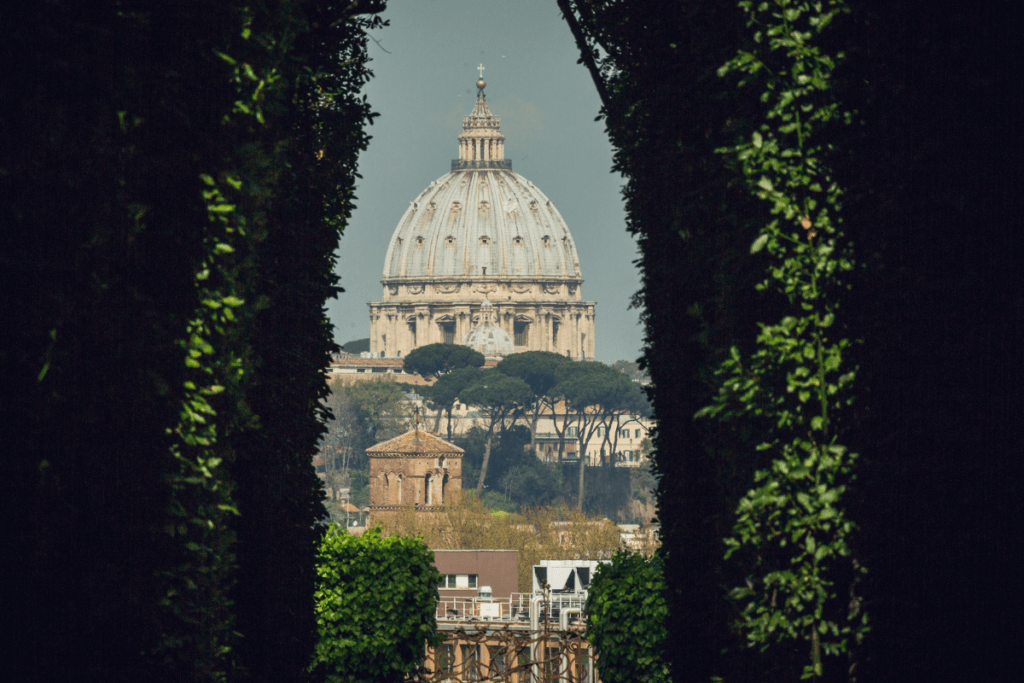
I had been in Rome for more than one month when someone decided to take me to one of the hidden gems in Rome. The perfect place to go to when you want to impress somebody or simply spend one romantic evening under the stars, this is definitely one thing you shouldn’t miss while in Rome.
A bit outside of the normal touristic itinerary, set up on the Aventine Hill, but not far from one of the most popular dining areas (Trastevere), the Piazza dei Cavalieri di Malta hides the keyhole at the Priory of Malta. Come here after dark, maybe once you’ve finished a delicious meal in Trastevere, or after having a stroll in the Giardino degli Aranci, and look through the keyhole. At the end of the corridor that opens up before your eye, you’ll see the lit-up St. Peter’s Dome perfectly framed by the trees and buildings around it.
While this place is not so hidden anymore, you definitely should add it to your Rome bucket list.
#18 A walk along the Tevere river
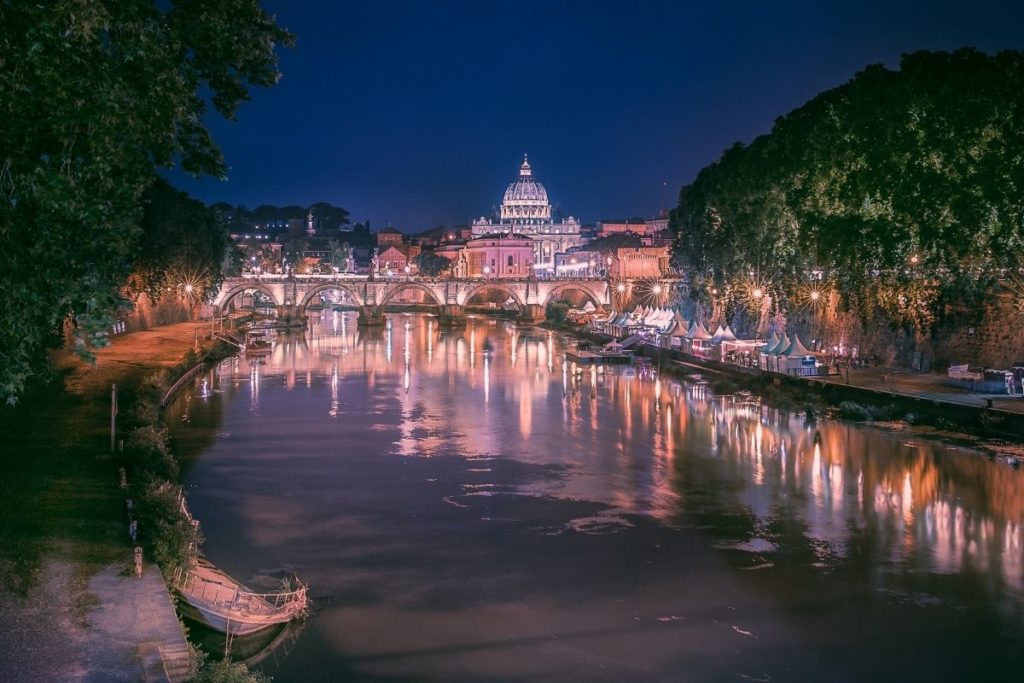
Walking along the Tevere river is a must, when you’re in Rome! From the Jewish quarter if you’re heading south, you can walk by some amazing bridges, the Tiberina Island and you can arrive to the foot of Aventino Hill, from where you can either walk up on the hill to the Orange Gardens and the Keyhole of the Knights of Malta, or you can follow the main road, visit the Bocca della Verita, the Circus Maximus, and arrive really close to the Colosseum.
If you’re walking up north, you will see many new and old stunning buildings all along the river side. There is a spectacular view on Castel Sant’ Angelo, the bridge of Sant’ Angelo designed by Michelangelo, but also, there’s an incredibly beautiful view over the St Peter’s Basilica in the Vatican.
If you’ve got some extra time to for walking in Rome, don’t miss a nice stroll along Lungotevere.
#19 Baths of Caracalla
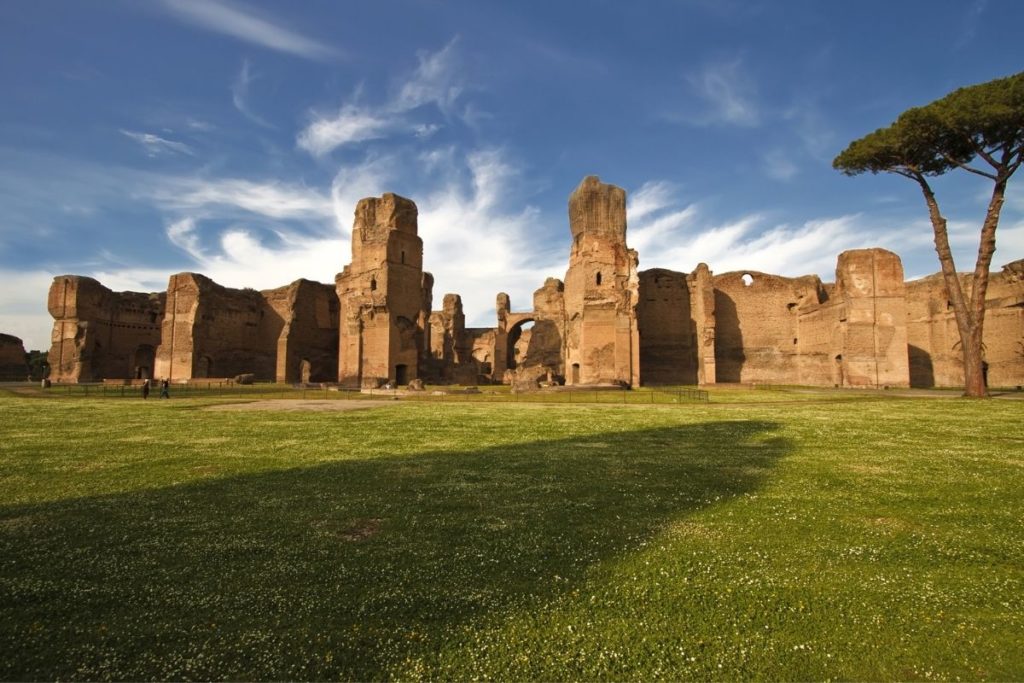
Here’s one of the less-known historical sites of Rome! The baths in Ancient Rome were the place to go, not only to clean up but also to exercise, read, relax, and most importantly, socialize. A visit to the Baths of Caracalla in Rome is a great opportunity to imagine Rome in the Imperial Age.
The complex was huge, it could accommodate up to 1600 people at the same time, and several thousand citizens visited the baths every day. It had rooms heated differently, a large swimming pool called “natatio”, gyms, changing rooms as well as an outside space perfect for walks and exercise.
Today, you can visit the ruins of the impressive structure, relax in the adjoining park, and admire the beautiful remaining mosaics. More recently you can also visit the underground, where the slaves made things work, using huge ovens to keep the water warm. The Baths of Caracalla are an easy 15-20 minutes walk from the Colosseum past the Palatine and Circus Maximus. If you’re passionate about history or architecture, then a visit to the Baths of Caracalla is one of the best things to do in Rome.
15 more things to do in Rome, Italy
#20 Walk on the ancient road of Via Appia
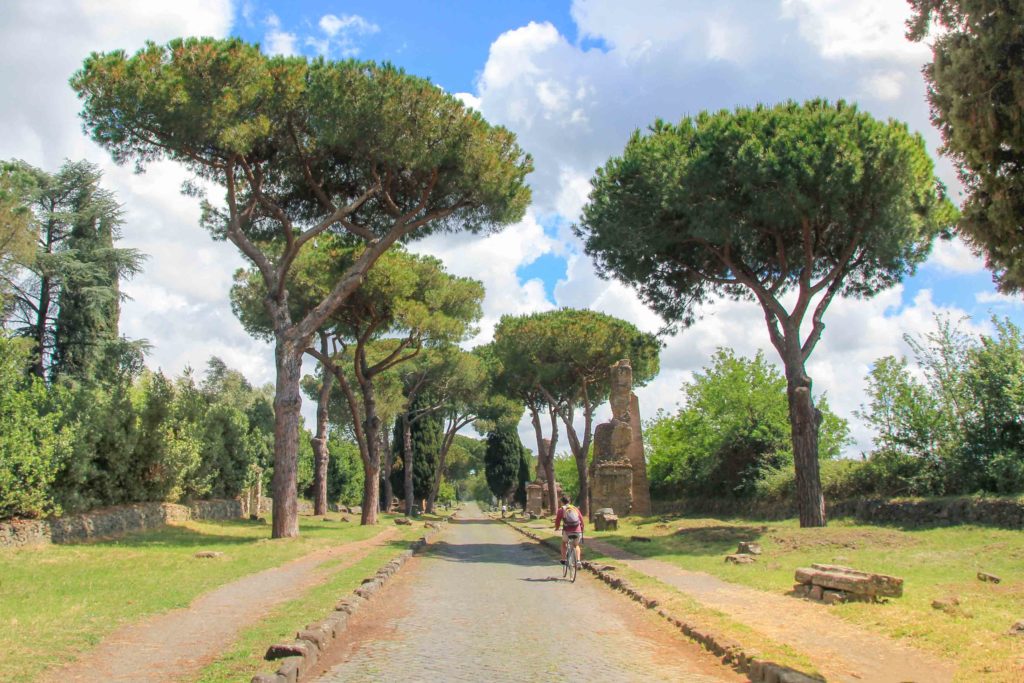
Contribution by PlacesofJuma
One of the coolest things to do in Rome is a bike tour along the Via Appia. At 2,300 years old, it is one of the oldest roads in the city and used to be in history the connection to the small regions outside Rome.
Today, the park of the so-called Appia Antica is a popular destination for locals as well as tourists. Starting point for a tour is the Porta San Sebastiano, here you can rent bikes or E-bikes and start your lovely ride on the cobblestone road. The path is relatively easy but keep in mind that it has a length of about 17 kilometers.
On the way there are many interesting things to discover and so you should plan enough time for taking photos and having breaks. The Porta San Sebastiano, the Museo delle Mura (Museum of the Walls), the Catacombs of Callixtus and San Sebastiano, Circus of Maxentius, the tomb of Cecilia Metella and Villa dei Quintili are just a few of the highlights awaiting you.
Tip: If you want to learn more about the history of Rome and the Via Appia, then you should book yourself a guided bike tour!
#21 Eat salumi

Contribution by Denise from Chef Denise
The food of Rome is just as famous as its historic sites. You’ll notice that Romans take time to savor every delicious bite, and linger over whatever they eat–whether it’s a meal or snack. And the perfect way to appreciate such an experience is to enjoy a salumi board in Rome, preferably with an aperitivo and outdoors if possible.
Salumi, known as charcuterie in France, includes Italian cold cuts such as salami, prosciutto, mortadella, njuda, and coppa. As with most Italian foods, there are regional specialties to look for like: Prosciutto di Amatrice, Mortadella di Amatrice, Susianella (pork offal sausage), and Coppiette (similar to a pork jerky).
However, you’re in Rome, and you will find many dishes and products from other regions. So, if you see Culatello di Zibello, a specialty of Emilia Romagna, you should try this rare treat because it’s one of the least exported Italian meats, and it is incredible! You will see salumi on restaurant menus all over Rome. Try one of the 3 Cantina Dei Papi locations where it’s their specialty. Or to make your own picnic, head to La Salumeria Castel Sant’Angelo or L’Antica Salumeria near the Pantheon.
#22 Parco degli Acquedotti

The Parco degli Acquedotti is a must-see for anyone who is interested in Roman history. Here you can see long stretches of two of the aqueducts that supplied water to the people of Rome in classical times. The Aqua Claudia was one of the most important of the ancient water channels, while the Aqua Marcia was later incorporated into the 16th century Felice aqueduct.
As well as the aqueducts you can walk along a small stretch of the ancient Via Latina. The Parco degli Acquedotti is part of the Appian Way Regional Park, a massive green area and archaeological site to the south of Rome. Even if you are not a history lover you can still enjoy the park for its peace and tranquillity. It is uncrowded, and you are more likely to spot green parakeets than other tourists!
To get to the Parco degli Acquedotti take metro Line A to Subaugusta station. From here it is a 10-15 minute walk.
#23 Spanish Steps
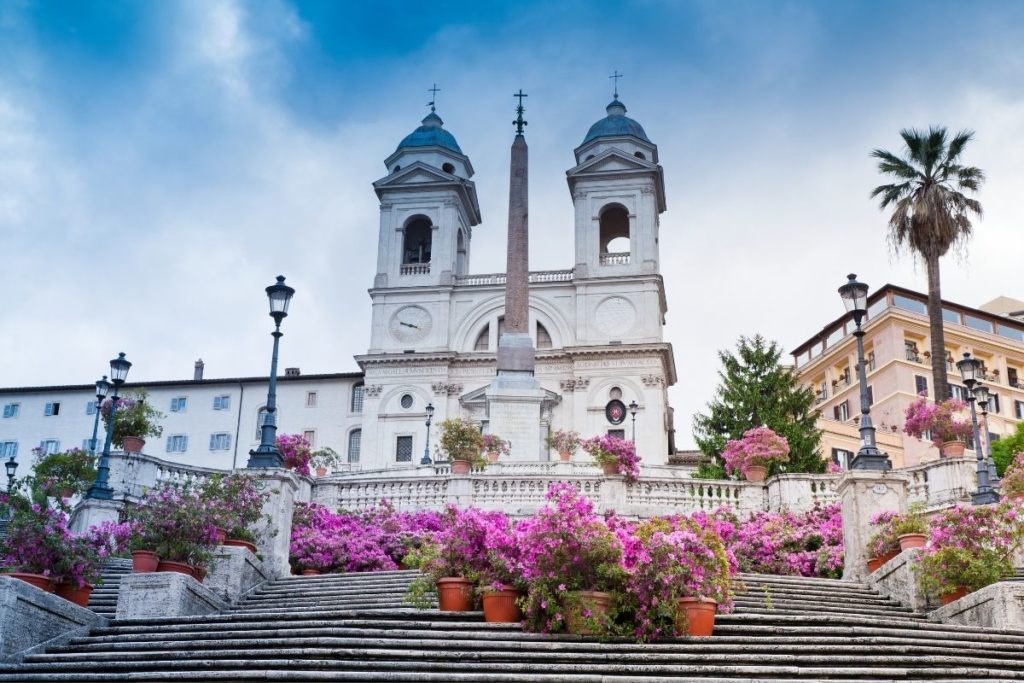
Cobbled streets, historical churches, the Vatican, Trevi and so many more treasures make Rome perfect for that Instagram picture. One such monument that poses a perfect backdrop for the perfect picture is Spanish Steps – a UNSECO site.
This particular landmark attracts a lot of tourists from around the world to dwell in its history. Completed in the 17th century, this landmark gained popularity from the beginning. Based on the eastern end of the old city centre, the 138 step staircase fans out from Piazza di Spagna to the Trinita dei Monto church.
The steps are a place for painters and artists to showcase their art. At the top of the Steps one can find a cluster of painters selling their artwork. The Spanish steps are surrounded by the Ketas shelly house on one side and the fontana della Barcaccia. The lanes around the steps are surrounded by designer stores waiting to be explored.
Tip: Since 2019 one is not allowed to sit on the Spanish Steps and any default will lead to a hefty penalty.
#24 Galleria Borghese
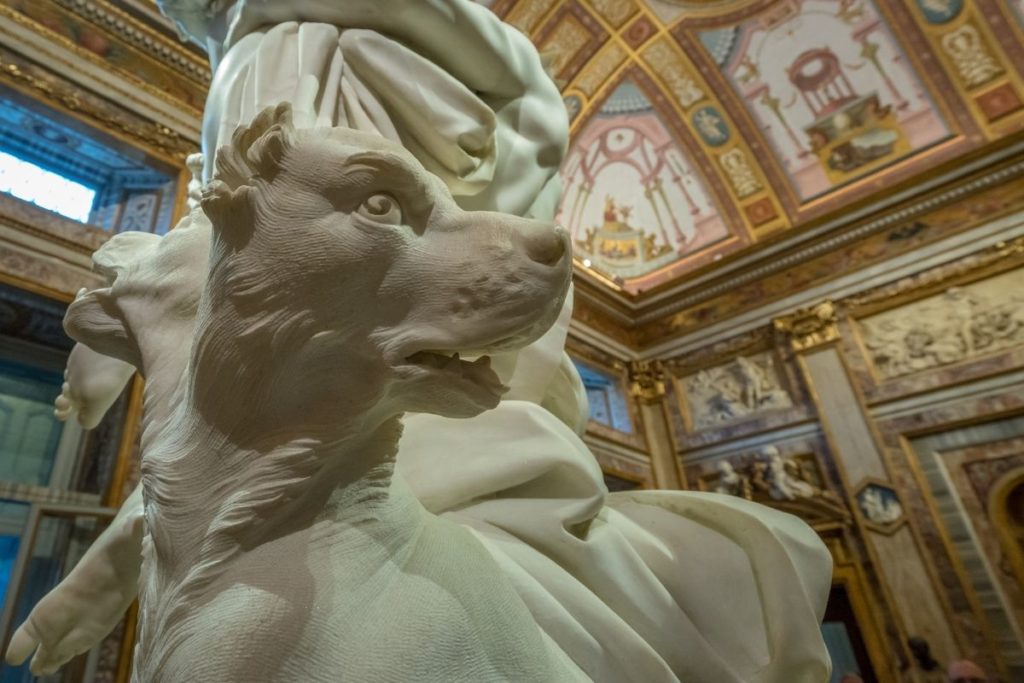
One of the most beautiful places to visit in Rome and filled with gorgeous art is the Galleria Borghese along with its stunning gardens that integrate so well with this marvelous architecture. Built for the influential Cardinal Scipione Borghese who was the nephew of the pope, the villa is extravagant and filled with art, sculpture, and the best of craftwork, and the famous works of Bernini, Caravaggio, Titian, Raphael, and other impressive artists that he widely collected from. Inside the grand villa are classical antiquity collections, frescoes, and the impressive grand salon that wows when you enter.
The villa covers an area of about three miles just on the outside of the ancient city and close to the gate at the Porta del Popolo. The gardens have gorgeous views, lovely fountains and water rivulets, and even housed ostriches, peacocks, cranes, swans, and other exotic animals.
If you are planning on visiting Rome more extensively, check this post on the best views around Rome to inspire you to visit even more fantastic attractions around the city.
#25 Fabulous views of Rome from the Pincio Terrace
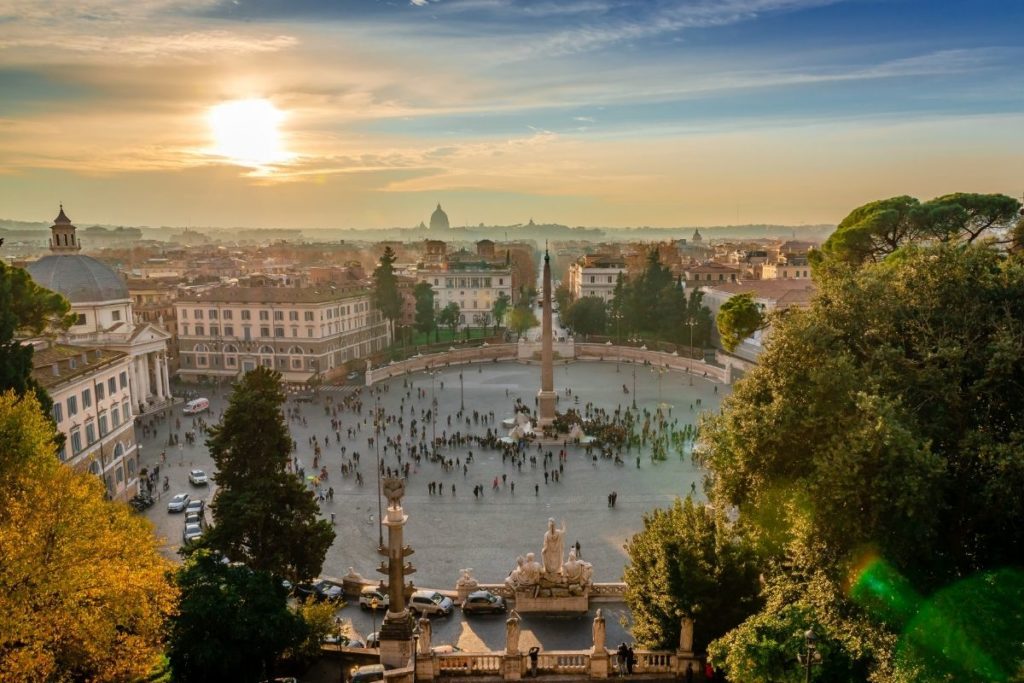
If you want to see a wonderful panoramic view of Rome, then be sure to stop by the Pincio Terrace for possibly the best view in Rome. Pincio Terrace is a public park created by Giuseppe Valadier in 1816. It is located on a hill north of the Quirinale. Just take the metro to Flaminio then climb up the stairs from Piazza del Popolo.
It is definitely a special place especially if you go at sunset to admire the stunning landscape as the sun goes down. Surrounding the park is a beautiful garden and the walking paths are an amazing way to see Rome from above. There are also many statues and a fountain inspired by the Italian war hero, Enrico Toti. It is the perfect place to unwind after a long day of exploring in Rome. Admission to the park is free and it is always open for visitors.
Address: Salita del Pincio
#26 Rent a boat in Villa Borghese

Rome may have been famously dubbed as a tourist trap, where it’s impossible to have fun without breaking the bank. However, it turns out you could visit this Italian capital on a budget!
We rented a rowing boat at the Borghese lake and it was a truly delightful way to soak in the underrated charms of Rome.
Villa Borghese itself is a beautiful park and the city’s third-largest public park. You can find several museums and attractions here, but the highlight is the manmade lake that’s home to a 19th-century temple and hundreds of turtles, ducks and water birds.
There is a small boat house on the side where rowing boats are rented out for €3 per 20 minutes. While the people working here don’t speak fluent English, they’re more than happy to meet visitors from all around the world!
Whether you’re in Rome with your partner or kids, this is a fantastic activity to spend a cool afternoon.
#27 Church of Santa Maria della Concezione dei Cappuccini
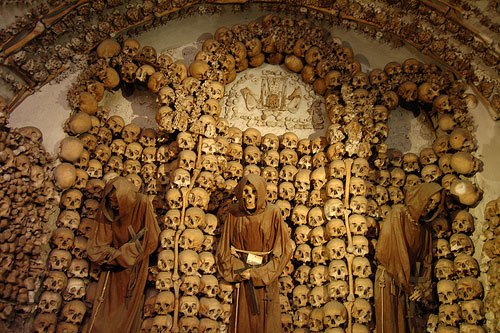
Contributed by Kristin from Adventures with Ensuite
When wandering the streets of Rome there seems to be a church, chapel, or cathedral on every corner. One church that certainly should make it on to your list is the Church of Santa Maria della Concezione dei Cappuccini, often called the ‘Bone church of Rome’. Upstairs there is a small nave and several side chapels built between 1626 and 1631. But that is not the reason to come here – the reason to visit is the crypt.
Below the church in the crypt, you will find a highly unusual sight. The walls and ceilings are decorated with the bones and skulls from thousands of Capuchin friars.
This unusual tradition started in 1631 when a cardinal exhumed the bones of thousands of friars. From then on friars and poor Romans were buried here. The practice continued until the 19th Century when it became a crime to bury human remains within the city walls.
Today the bones of 4,000 friars are arranged in intricate patterns and designs making it potentially one of the most macabre works of art in the world. To pay the dead the respect they deserve visitors must keep their voices low and photography is forbidden.
#28 Testaccio Market
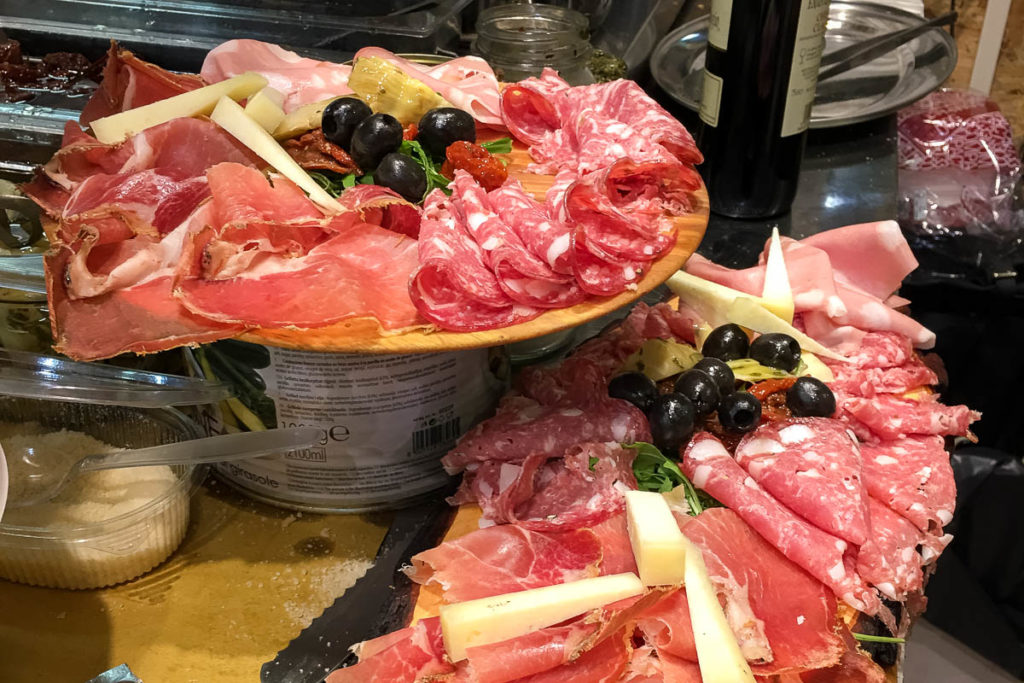
Contributed by Lori from Travlinmad
Touring Rome and all its grand historical sites can leave a visitor pretty beat. When that happens it’s time to find alternatives to wandering through ruins and churches. A great foodie destination is in order, to the Nuovo Mercato di Testaccio, the Testaccio Market, one of the oldest markets in Rome. The market is easy to get to, and less than half an hour from the city center.
Yes there are vendors selling Italian souvenirs and made in Italy shoes, but the best reason to go is the incredible food scene. In the market you can experience traditional Roman culture first hand, and eat and drink your way through the food side of the market.
Shop for fruits, vegetables, breads, fresh pasta made to order, wine, and an amazing number of typical foods you’ll find only in Rome. No matter what your tummy desires, there’s something for every taste. And delicious Roman-style pizza is a given!
Testaccio is where you’ll rub elbows with local folks, and it’s much less expensive to sample any number of Roman delicacies. But be advised, lunchtime can be a bit daunting for tourists. Hang in there. Be patient and enjoy the culture. It’s worth it. And after all, you’re in Rome!
#29 Roll into a pasta-making cooking class in Rome
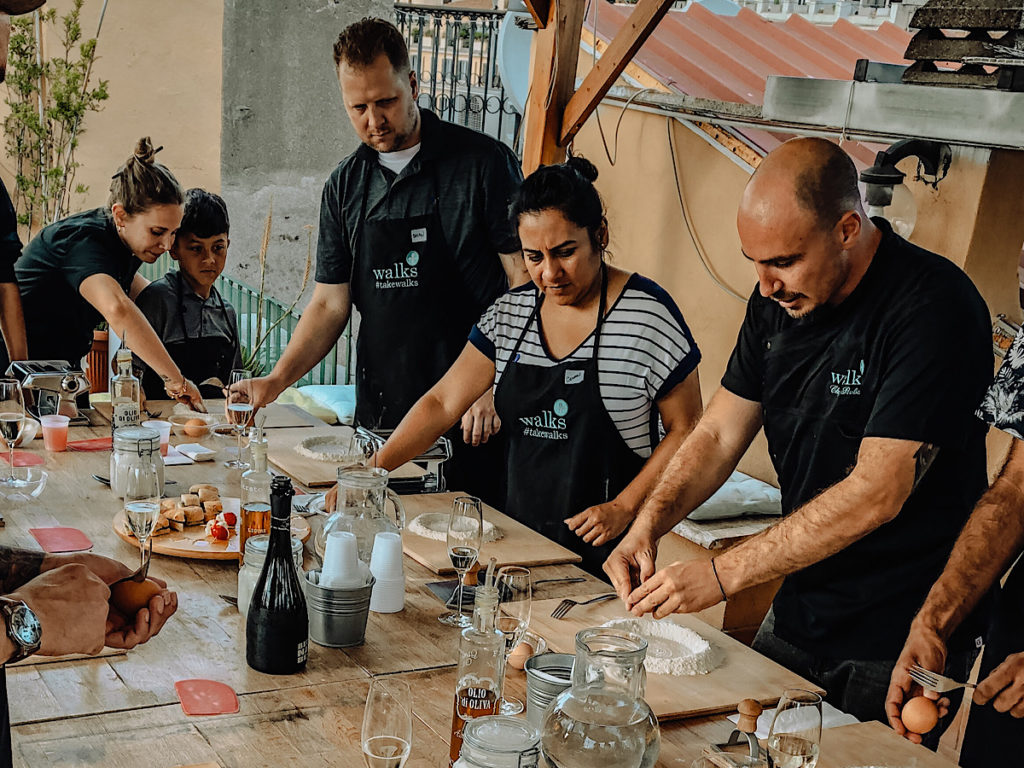
Contributed by Olivia from the Girl With Blue Sails
Taking a pasta-making class in Rome lets travelers dive deep into the local flavors and culture. The instructors are local chefs, the classes are small groups, and the personal connections made are priceless. Some of these classes even include a group outing to a market prior to class, letting the chefs show the group how to find the freshest local ingredients.
This cooking class in Rome are hands-on, allowing the group to mix their own dough and shape their own pasta. Learn the importance of the quality of ingredients, and about all the different types of pasta that exist. The sauce is created together as well, the heavenly spiced aromas filling the kitchen. Once the pasta is done and ready, the group always gathers at a dinner table to enjoy their meal together with wine.
There are many popular pasta-making classes in Rome from which to choose. All will include a couple of types of pasta, some include deserts, and almost all include wine. Most classes send the group away with recipes so they can share their new knowledge of Italian cooking at home with friends and family.
The last 5 of the list of things to do in Rome, Italy
#30 Torre della Scimmia
Contributed by Victoria from Guide Your Travel
The Tower of the Monkey or Torre della Scimmia is located in the heart of Rome. This is somewhat of an unusual tourist location and you won’t find as many tourists here as in other spots around Rome. Legend says that in the 17th-century a pet monkey stole a little boy and carried him all the way to the top of the tower. The father tried to coax the monkey to come down but nothing seemed to work. He then prayed to the Virgin Mary and the monkey promptly carried the child back down to safety. To show his gratefulness the man erected a shrine to Mary at the top of the tower. You can still see this shrine today and a lamp constantly burns next to the statue of Mary. Come here to admire the beautiful architecture of the tower and to admire how after hundreds of years the shrine is still in place.
#31 Gelateria Giolitti in Rome!

When visiting Rome, getting gelato is a must! Although there are an infinite amount of gelato places, Giolitti is one of the best places to get this delectable treat. Giolitti is considered the oldest ice cream parlor in Rome. It was founded in 1890 by Giuseppe Giolitti and his wife Bernardina. After several years, it became the main supplier of the royal family.
Present-day, Giolitti serves ice cream and pastries as well as coffee and a few other beverages. It is a great place to take a break after wandering around Rome all day. In total, they have over 60 gelato flavors you can choose from, thus keeping you coming back for more.
You can opt to get the items to go or sit down at their indoor or outdoor tables. I recommend taking your time and grabbing one of the outdoor tables to relax. No matter what, getting gelato at Giolitti is one of the best things to do in Rome.
#32 Ostia Antica
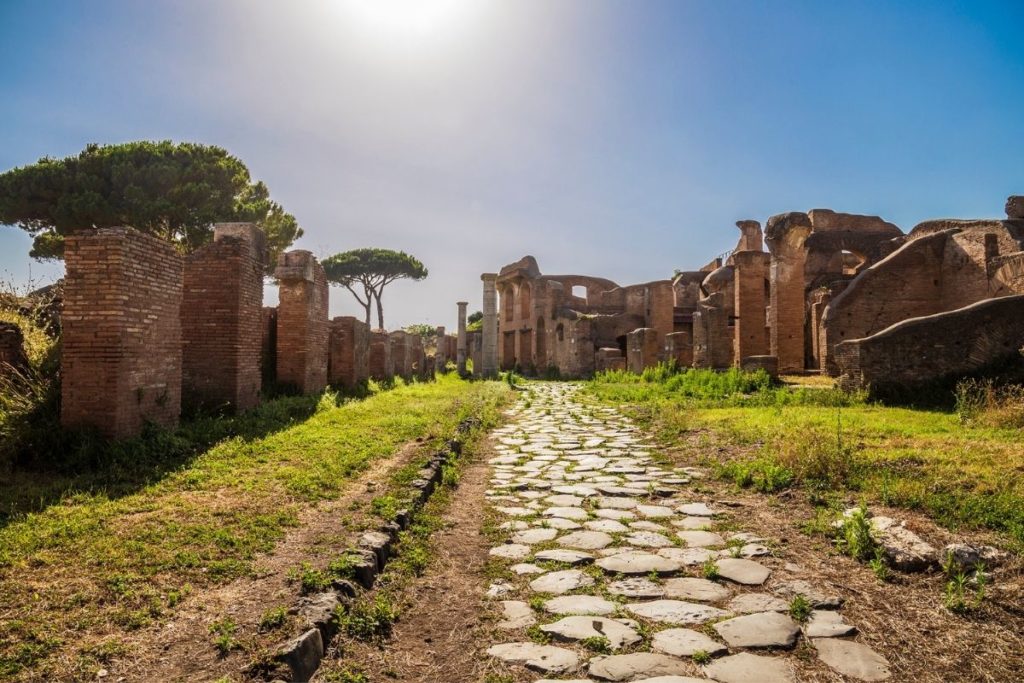
When you are in Rome, don’t confine your exploration of Ancient Rome to the Forum and Colosseum. For an insight into the lives of everyday Romans at the height of the Roman Empire, visit Ostia Antica.
Located within the Rome metropolitan area and an easy 30 to 40-minute journey on the Metro, this archaeological site is a worthy rival for the better-known, and much busier, Pompeii. Founded around 620 BC by Ancus Marcius, the legendary fourth king of Rome, to guard the mouth of the Tiber, Ostia Antica developed into the port of Rome. It flourished as a naval and commercial base in the 2nd and 3rd Century AD, before slowly falling into decline.
In contrast to Pompeii, which was inhabited by affluent Romans, Ostia Antica was a working port town and home to a spectrum of social classes. As such, the site’s well-preserved ruins provide a fascinating insight into day-to-day life. The excavated structures include houses, apartments, temples, bars, public baths, workshops, stores, and – of course – latrines. Whilst it is not a huge site, allow two hours to see its highlights. We must say that while it takes time to arrive to Via Appia, it’s a realy gem and it shouldn’t miss of your things to do in Rome, Italy list.
#33 Domus Aurea – Home of Rome’s Most Hated Emperor
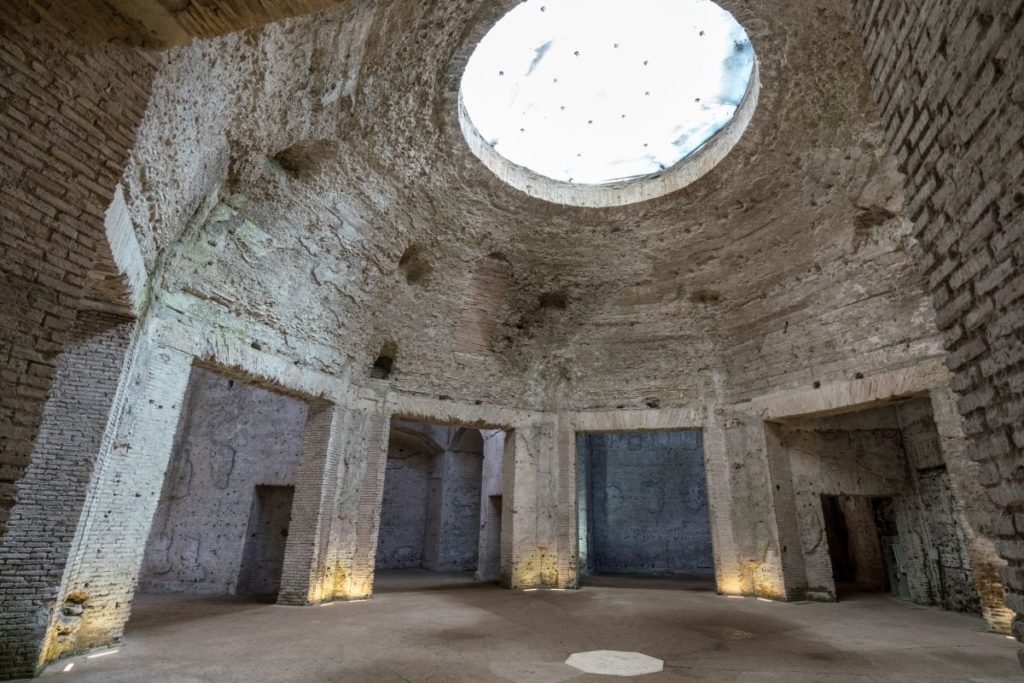
Rome is known for surprisingly affordable cost of living, world-class dining, historical monuments, and famous emperors that ruled most of the known world. None of Rome’s emperors was more infamous or despised than Nero. And nothing symbolized Nero’s decadence more than his home, the Domus Aurea. Nero built his palace after the Great Fire in 64 AD when an inferno destroyed most of Rome. A historical tale even says he fiddle and laughed as the city burned. Some believe he may have even started the fire himself.
Less is not more, and subtlety is a forgotten word when it comes to Nero’s tastes. The Domus Aurea is a massive complex stretching between 100 and 300 acres with over 200 decorated rooms built for entertaining, wining, and dining the Emperor’s guests. The walls were decorated with elaborate frescos, ivory, and precious stones. In fact, the name Domus Aurea, translated to The Golden House, is aptly named, as the sunlight reflected from the gold leaf embedded in the marble walls. There is even a human-made lake. Domus Aurea epitomized Nero’s debauchery, wealth, and power.
So, where is this ornate palace now? Buried. After Nero’s assassination, successors wanted to erase his traces and entombed the entire complex, even filling in the artificial lake, and built the Colosseum and Baths of Trajan on top. Due to its burial, the complex is still reasonably intact. While archaeologists continue to excavate the underground complex, tours are available for visitors to see halls, rooms, and frescos from Rome’s most hated Emperor.
#34 Try the Jewish-style fried artichokes in the Roman Jewish ghetto
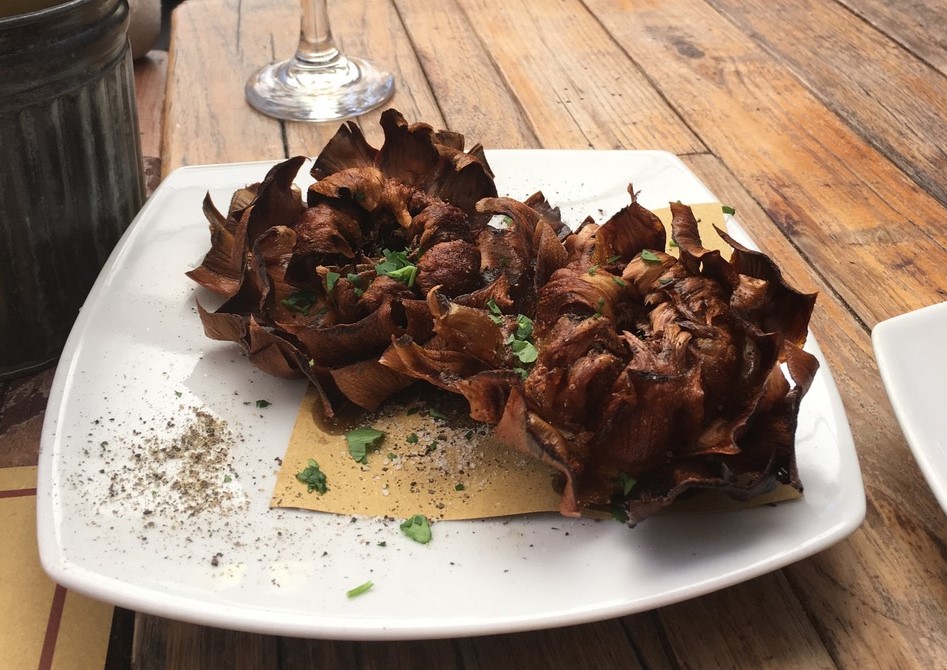
Milijana Gabrić of World Travel Connector
If you are a foodie who is traveling to Rome in springtime and want to treat your palate with something truly unique and delicious, do yourself a favor and head to taverns in the Jewish ghetto in Rome and order Jewish-style fried artichokes.
Fabulous Roman ‘carciofi alla giudia‘ are one of the most appetising and the most famous Italian dishes ever. Popular Jewish-style fried artichokes have been a signature dish of the Roman Jewish ghetto since the 16th century when Pope Paul IV forced Roman Jews to live in an isolated ghetto with a shortage of food and when the dish was invented. But over time this flavourful dish has become a favorite dish of all Romans.
Amazing ‘carciofi alla giudia’ are a simple but undisputedly mouthwatering dish. The artichokes are deep-fried in authentic Italian olive oil in such manner that they get crusty from the outside but tender and buttery inside. Golden and sunflower-like deep-fried ‘carciofi alla giudia’ are traditionally offered as ‘primo platto’ in taverns of Roman Jewish Ghetto in spring since artichokes are harvested from February to April in Italy.
So, if you are visiting Rome in springtime, make sure to visit fantastic taverns in Jewish ghetto in Rome and ask for fabulous ‘carciofi alla giudea’!
#35 Have a night out in Pigneto
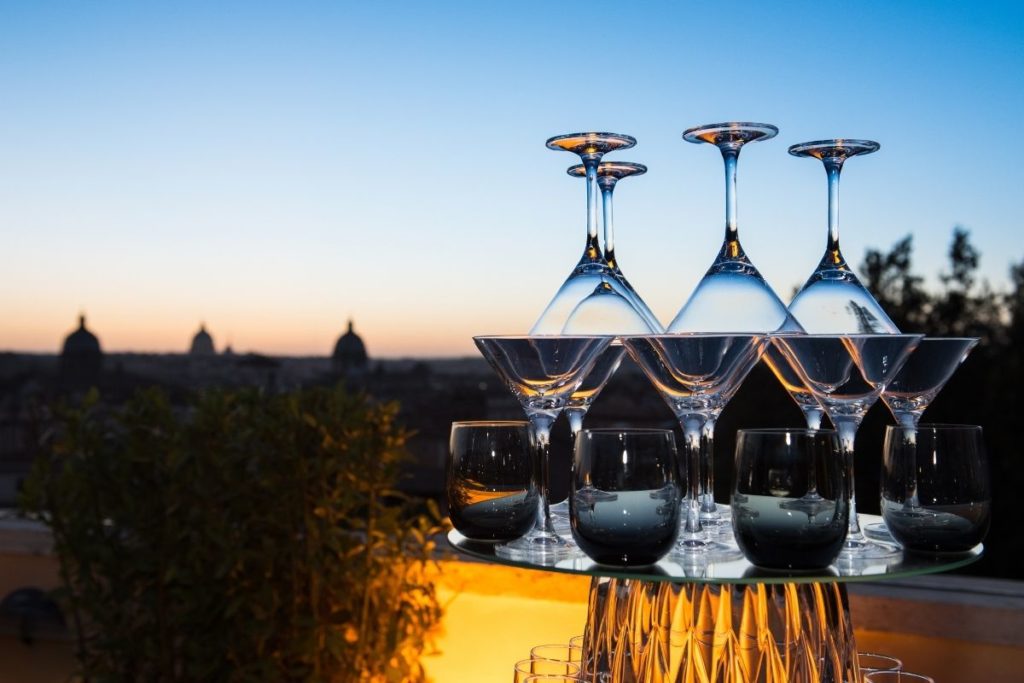
Pigneto is an eclectic neighborhood located off-the-beaten-path from your typical tourist joints in Rome. Known as the “Brooklyn of Rome”, the area has an artistic and bohemian vibe. You’ll find many outdoor cafes, restaurants, and bars filled with hip, young locals. It’s a great place to experience Rome’s local culture and to escape the crowds in the city center. You likely won’t hear anyone speaking English here.
Having a night out in Pigneto is a fun activity to add to your Italy itinerary. Start your evening with an aperitivo at Necci dal 1924, arguably the most famous bar in the neighbourhood. It was director Pier Paolo Pasolini’s favourite watering hole while filming his movie Accattone in the 1960s. Afterwards go bar-hopping down Via del Pigneto, a lively street where you will see locals socializing on outdoor patios with drinks in hand.
Pigneto is located in the southeast of Rome and can be easily reached by tram from the city center. All these places are great if you’re planning a 3 or 4 day Rome itinerary.
These 35 are our top highlights for the things to do in Rome, Italy. For a complete and really amazing trip to the Eternal City, make sure to add these to your Rome bucket list! This article isn’t organized by ranking the place from 1 to 35. It’s a random list, mostly organized by things that are closer to each other.
